Finance is changing, rapidly. Blockchain, crypto, and decentralized finance (DeFi) are not just buzzwords—they represent transformative technologies that will redefine the very foundation of financial services. For finance veterans in micro-lending, finance, risk, and analytics, these technologies open a new frontier for innovation and growth, especially within the unbanked or micro-financing space.
This is Jamie Dimon. He is the Chairman and CEO of JPMorgan Chase, one of the largest and most prominent financial institutions in the world. He has been at the helm of the bank since 2005 and is regarded as one of the most influential figures in global finance.
Jamie Dimon has been notably critical of cryptocurrency, particularly Bitcoin and had no choice but to evolve his stance. He said:
- Bitcoin as a "Fraud" (2017): In 2017, Dimon made headlines when he called Bitcoin a "fraud" during an investor conference, stating that it was "worse than tulip bulbs" and that it would eventually "blow up." He even said that he would fire any JPMorgan trader found trading Bitcoin, citing it as speculative and not backed by any real assets.
- Regret Over Harsh Comments (2018): In 2018, Dimon somewhat walked back his earlier comments, expressing regret for calling Bitcoin a fraud. However, he maintained that he wasn’t personally interested in Bitcoin and believed it had no intrinsic value. Despite softening his tone, he still remained skeptical of cryptocurrencies.
- Regulation and Government Control (2021): Dimon has consistently emphasized that cryptocurrencies need to be heavily regulated. He warned that governments would eventually take significant action against digital currencies, as they pose threats to financial stability and monetary control. He has highlighted concerns over issues like fraud, money laundering, and terrorist financing within the crypto space.
- Interest in Blockchain (2021-2023): While Dimon remains critical of cryptocurrencies like Bitcoin, he has shown a more favorable stance towards blockchain technology. JPMorgan Chase has invested in blockchain and developed its own digital currency, JPM Coin, for institutional clients to facilitate instant payments. Dimon distinguishes between cryptocurrencies, which he is wary of, and blockchain, which he sees as a useful technology for financial services.
- Ongoing Skepticism (2023): More recently, Dimon has reiterated that Bitcoin and similar cryptocurrencies are "decentralized Ponzi schemes." He still believes that crypto is mostly used for illicit activities, though he acknowledges that some blockchain technologies and stablecoins could have utility within the financial system if properly regulated.
While Dimon has been publicly skeptical of cryptocurrency, particularly Bitcoin, keep reading to see his 360 on blockchain, crypto, DeFi and Web3.
1. Reaching the Unbanked and Underbanked
Unbanked populations are largely excluded from the financial system due to creditworthiness, high fees, or lack of infrastructure. Blockchain and DeFi open up access to secure, low-cost financial services for anyone with an internet connection. By leveraging blockchain, a new wave of accessible micro-lending products—offered globally—can be created without the need for intermediaries. Without the intermediaries, lenders can capitalize on the massive, underserved global market that existing financial systems fail to reach.
2. Transparency and Trust
The finance industry has long struggled with issues of transparency and trust, especially in sectors like high-interest lending. Blockchain, with its immutable ledger, allows for completely transparent transactions. Every loan, payment, and interaction can be verified on a decentralized network, ensuring no manipulation or hidden fees. This verifiable history can elevate a lender's reputation, making it a leader in ethical lending practices while still providing a profitable service.
3. Risk Reduction and Automation
Smart contracts are one of the most revolutionary aspects of blockchain technology. They are self-executing contracts with the terms directly written into code. For micro-lending, smart contracts can automate the entire loan process—from issuing funds to managing payments and enforcing penalties for defaults—significantly reducing operational overhead and risk. Automated credit scoring through decentralized oracles could also give a lender an edge by providing real-time risk assessments based on transparent, real-world data.
4. DeFi and Yield Generation
In DeFi, yield generation enables participants to create liquidity pools and lend funds on decentralized platforms in exchange for returns, which differs from traditional banking in key ways. This represents an entirely new revenue stream because there’s no central authority like a bank and users maintain direct control over their assets through smart contracts. It can offer higher returns by cutting out the middleman.
While it may seem that it also comes with greater risks, such as smart contract vulnerabilities and the absence of insurance, traditional banks face significant vulnerabilities compared to DeFi platforms. Cybersecurity threats like data breaches and phishing attacks can expose sensitive customer information. Insider fraud and employee negligence are also risks, while system outages and operational failures can disrupt services. Banks are susceptible to fraud, including card skimming and identity theft, and must manage liquidity risks such as bank runs. Politics can also influence central banking monetary policy. Additionally, regulatory penalties for non-compliance and loan defaults pose financial threats.
Unlike decentralized DeFi platforms, banks operate with centralized control, making them vulnerable to both internal and external failures. DeFi operates transparently, but may require navigating a volatile, peer-to-peer system that lacks the safeguards of traditional banking.
5. Tokenization and Incentives
In the future of finance, tokens will play a vital role in loyalty programs, incentivizing customers, and even creating entirely new financial products. By offering tokenized rewards or integrating with existing cryptocurrency ecosystems, stronger client relationships are created that increase retention and engagement. Blockchain can also enable fractional ownership models for investments, allowing clients to invest small amounts of money with the potential for high returns.
6. Global Reach and Instant Settlement
Traditional finance is often constrained by borders, banking systems, and regulations. Blockchain is global by design. Using cryptocurrencies as collateral or as a medium for loans can allow lenders to serve clients across different geographies without the friction of cross-border fees or delays. Additionally, transactions on the blockchain settle instantly or within minutes, improving liquidity for a lending portfolio.
Toncoin is directly tied to The Open Network (TON), a decentralized layer-1 blockchain accessible through ton.org. Originally developed by Telegram, TON is designed for high scalability and speed, aiming to support mass adoption of decentralized applications (dApps) and services. The platform's core features, such as multi-level sharding and Proof of Stake (PoS), position it as a powerful contender for DeFi, cross-border payments, and digital asset management. Its connection to Telegram further enhances its potential for widespread use, especially if integrated with messaging and social media platforms.
While Toncoin is the native cryptocurrency of The Open Network (TON), it is not the only cryptocurrency that can be used on the network. TON supports other assets and tokens through its smart contract system, allowing for the creation of tokenized assets, support of wrapped tokens (such as wrapped Bitcoin or Ethereum) and the development of decentralized exchanges (DEXs), stablecoins, and NFTs.
7. Staying Competitive in a New Era
Adopting blockchain and DeFi will future-proof lending operations. While traditional finance is becoming more competitive and saturated, blockchain presents a greenfield of opportunities for innovation. These technologies provide cutting-edge services that modern customers will expect in the coming years.
Blockchain technology, which underpins cryptocurrencies, is being explored by BRICS nations for various applications beyond financial transactions. These include trade facilitation, smart contracts, supply chain management, and cross-border financial settlements.
- China is investing heavily in blockchain technology, and its government has outlined blockchain as a strategic technology for the future.
- India and Brazil are also seeing increased interest in blockchain for enhancing financial transparency, reducing corruption, and improving cross-border trade efficiency.
Blockchain, crypto, and DeFi are not simply trends but the inevitable evolution of the financial services industry. They offer unique opportunities to enhance efficiency, reduce risks, increase transparency, and tap into global, underserved markets. Integrating these technologies into lending will be the next wave of financial innovation—offering cutting-edge products to online micro-financing clients with speed, security, and scalability.
What about the concerns of fluctuations in price and that it's not currency?
It's true that one of the main concerns surrounding blockchain and crypto, particularly in relation to DeFi, is the price volatility of cryptocurrencies. Many traditional finance professionals question the practicality of using such volatile assets in everyday transactions, especially in micro-financing where stability is key. However, these concerns are being addressed through innovations in the space.
1. Stablecoins as a Solution
One solution to the volatility of cryptocurrencies are stablecoins. Unlike traditional cryptocurrencies such as Bitcoin or Ethereum, stablecoins are pegged to a stable asset, such as the US dollar or other fiat currencies. This pegging keeps the value of the stablecoin relatively constant, making it far more suitable for financial services like lending or payments. By integrating stablecoins into micro-lending platforms, you can take advantage of the benefits of blockchain without exposing clients or the business to large fluctuations in value.
Stablecoins allow for global reach, transparency, and near-instant transactions while maintaining the same price stability expected from fiat currencies. This makes them an ideal medium for micro-financing operations and for bridging the gap between traditional finance and DeFi.
Even Donald Trump is pumping up his new World Liberty Financial stablecoin they says is aimed at keeping the dollar "the world’s settlement layer for the next 100 years". However, it's a fork of a blockchain that has already been hacked which would hurt adoption.
2. Not Necessarily a Currency—But a Technology
It’s also important to view blockchain and crypto not solely as alternative currencies but as a transformative technology for financial services. Blockchain is more about enhancing the infrastructure of transactions—providing speed, security, and transparency—rather than serving as a direct replacement for traditional currencies. By embracing blockchain as a technological layer rather than as a currency, lenders improve efficiency, reduce costs, and increase the speed of transactions, while still relying on traditional currencies like dollars or euros for value transfer.
Lenders don’t have to treat cryptocurrencies like everyday money to benefit from the technology. Instead, blockchain can facilitate better transaction processing, record-keeping, and automation within existing micro-finance frameworks, which still operate primarily in fiat currency.
- Blockchain Service Network (BSN): China launched the BSN, a nationwide blockchain infrastructure platform, to help businesses and developers deploy blockchain applications more easily and affordably. BSN aims to integrate blockchain into a variety of industries, including finance, healthcare, and logistics, making it a cornerstone of China’s blockchain ambitions.
- Supply Chain and Industrial Blockhain: China is leveraging blockchain technology to improve supply chain management and boost transparency in industries like agriculture, manufacturing, and pharmaceuticals. Blockchain can enhance traceability, allowing consumers and regulators to track products' origins and journey through the supply chain, reducing fraud and ensuring quality control.
- Permissioned Blockchains—China developing networks that are controlled and regulated by the government or authorized entities. This speeds adoption and maintains control over key technologies and information flows, ensuring that blockchain systems comply with national regulations and serve state interests.
- The JPM Coin team seeks to help address the complex challenges of cross border payments, simplify clients' liquidity funding needs and offer next generation corporate treasury services.
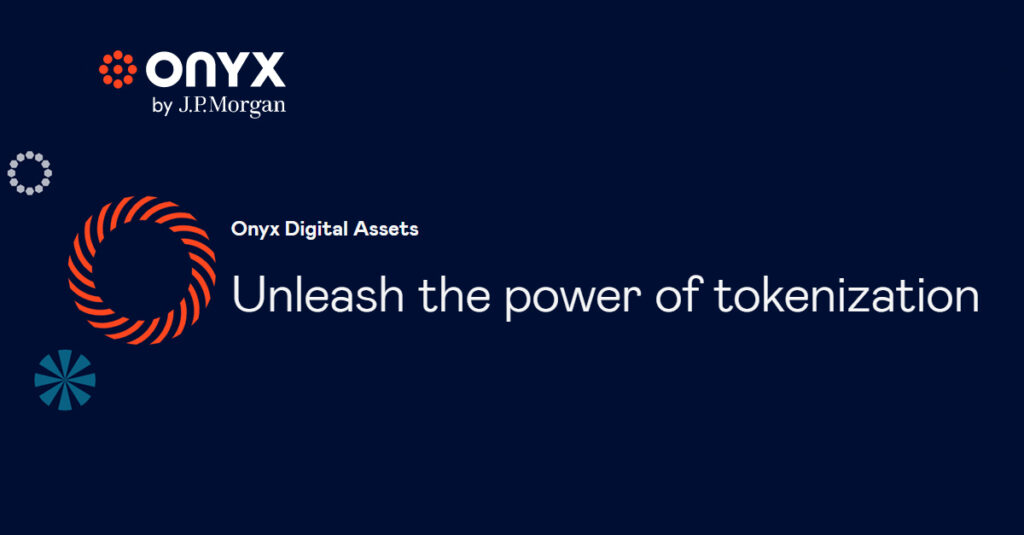
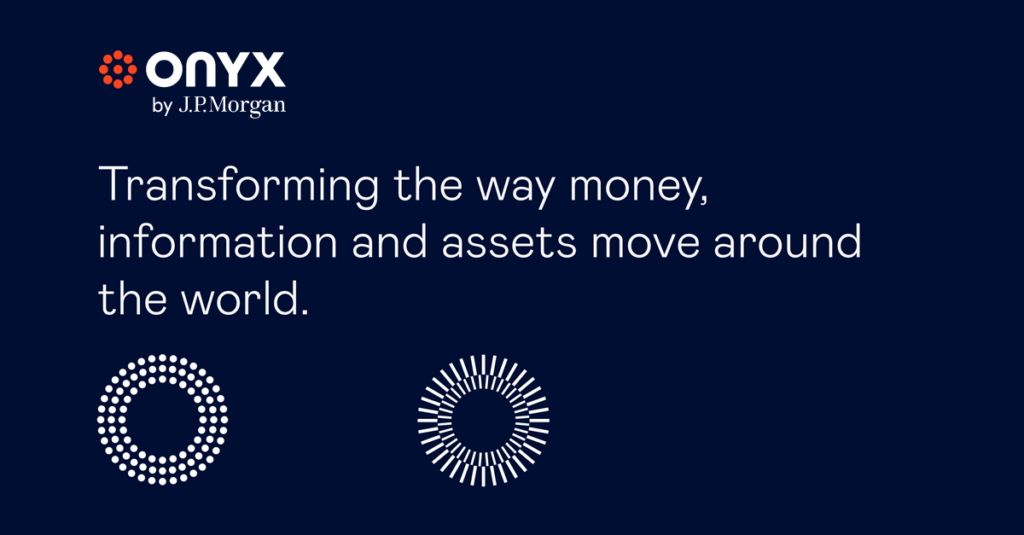
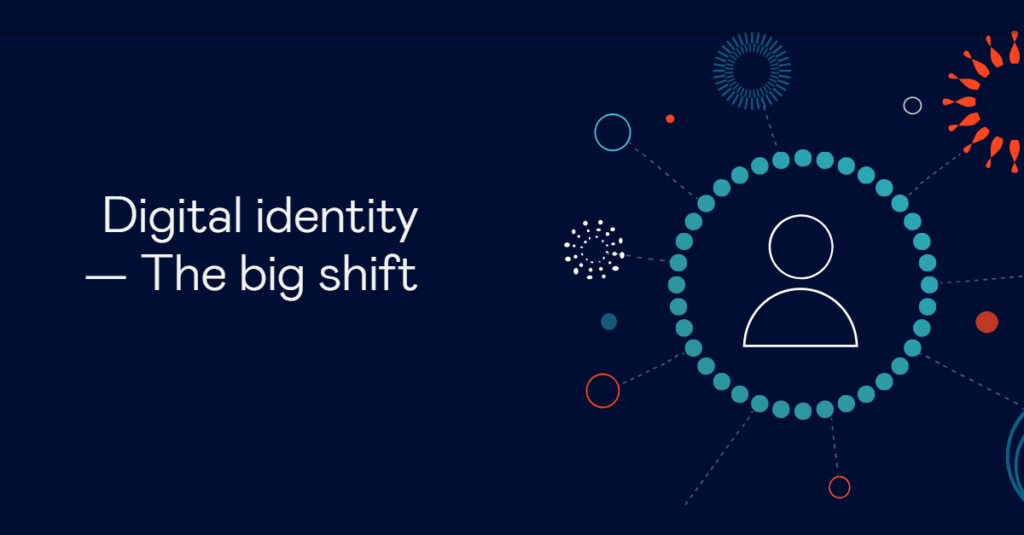
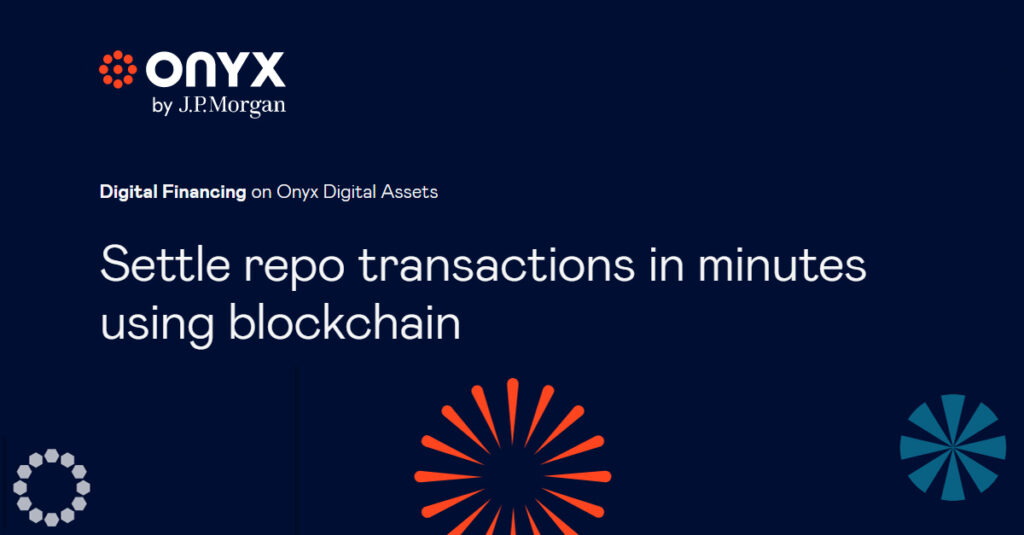
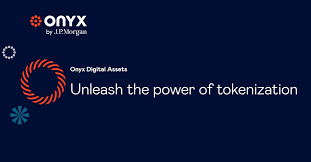
While CEO Jamie Dimon has been publicly skeptical, in 2020, JP Morgan formed Onyx has pioneered the world’s first bank-led blockchain platform for the exchange of value, information and digital assets. The first product JPM Coin, is a permissioned system that serves as a payment rail and deposit account ledger, that allows participating J.P. Morgan clients to transfer US Dollars held on deposit with J.P. Morgan within the system, facilitating the movement of liquidity funding and payments in real time. JPM Coin has the capability to support advance payment types to help solve common hurdles of traditional cross border payments.
3. Crypto as Collateral or Yield Generation
Another way to think about crypto is as an asset class rather than a currency. While the volatility of cryptocurrencies can make them unsuitable for daily transactions, they are increasingly being used as collateral for loans or as a way to generate yield. DeFi platforms allow users to deposit cryptocurrencies to back loans or participate in decentralized liquidity pools to earn interest. For lenders, this means you could offer new financial products where clients use crypto as collateral without needing to deal with the currency fluctuations directly in their transactions.
4. Hedging Mechanisms
There are also advanced financial instruments that can be used to hedge against the volatility of crypto. Much like in traditional finance, options, futures, and swaps are available in the crypto markets. By using these tools, your companies can manage and limit exposure to price fluctuations. This ensures that while you tap into the benefits of crypto and blockchain, you’re not at the mercy of price swings.
5. Governments and Institutions are Evolving
We are also seeing increasing adoption of blockchain technology by governments, central banks, and major financial institutions. Central Bank Digital Currencies (CBDCs) are already being piloted around the world, offering the stability of fiat currency with the benefits of blockchain’s efficiency. As these digital currencies become more mainstream, the line between traditional and crypto finance will blur, and your early adoption will position your companies as leaders in this space.
The BRICS and CBDCs
BRICS countries have been increasingly focused on de-dollarization, seeking alternatives to the U.S. dollar in international trade and financial settlements. This includes discussions of developing a new reserve currency or adopting more diverse currencies for trade. The rise of BRICS as an economic bloc, coupled with their substantial influence in global commodities markets, could challenge the dominance of the dollar. The BRICS' combined GDP represents about 26% of global GDP around $18 trillion (as of 2023) vs the U.S. GDP at about $26.9 trillion, which represents about 24-25% of global GDP. China and India are modernizing quickly and and have nearly half the world's population to support their technologies.
- Crypto and De-dollarization: Cryptocurrencies, especially stablecoins, present an alternative store of value and medium of exchange outside the traditional U.S.-led financial system. BRICS are exploring leveraging blockchain technologies to create their own decentralized or state-backed digital currencies to bypass the U.S. dollar's influence in trade. Russia and China have already shown interest in such possibilities, with China launching the digital yuan and Russia exploring crypto use in cross-border trade to avoid sanctions.
- Central Bank Digital Currencies (CBDCs): BRICS nations are actively exploring or developing CBDCs as a way to modernize payment systems, improve financial inclusion, and enhance monetary control.
- China: The digital yuan is a frontrunner in the global CBDC race and aims to challenge the U.S. dollar’s dominance in international trade, particularly in Asia and Africa, where China has significant influence through its Belt and Road Initiative. The digital yuan (officially known as the Digital Currency Electronic Payment, or DCEP) is a central bank digital currency (CBDC) built on blockchain technology. It is part of China's effort to modernize its payment system, reduce reliance on cash, and enhance the globalization of the renminbi (RMB). The digital yuan enables the Chinese government to maintain strict control over the financial system while promoting cashless payments. It is also designed to reduce reliance on international financial systems dominated by the U.S. dollar, such as SWIFT.
- Russia: Facing sanctions, Russia has been developing the digital ruble to mitigate the impact of international financial isolation.
- India and Brazil: Both are exploring CBDCs as a way to enhance financial inclusion and streamline the financial systems in their large, underbanked populations.
The collective development of CBDCs within BRICS could lead to new regional or even global financial networks that bypass traditional Western-led financial systems such as SWIFT.
El Salvador Bitcoin Adoption
El Salvador made global headlines in 2021 when it became the first country to adopt Bitcoin as legal tender. This bold move has had far-reaching implications for both the country and the global cryptocurrency landscape.
- Financial Inclusion: A large portion of El Salvador's population is unbanked, and access to traditional banking services is limited. Bitcoin offers a digital alternative that allows individuals to store and transfer money without the need for a bank account.
- Remittances: El Salvador heavily relies on remittances, which account for a significant portion of its GDP (approximately 20%). Traditional remittance services like Western Union charge high fees, and Bitcoin could offer a cheaper, faster alternative for cross-border transfers.
- Economic Independence: El Salvador’s economy is heavily dollarized, and Bitcoin adoption was seen as a way to reduce reliance on the U.S. dollar. By diversifying its financial system, the country aimed to gain more economic independence.
- Tourism and Innovation: President Nayib Bukele's government has also positioned Bitcoin adoption as part of a broader strategy to attract foreign investment, particularly from the cryptocurrency and blockchain sectors. The initiative aims to transform El Salvador into a hub for crypto innovation.
Dominica Partners with TRON Blockchain
In contrast to El Salvador's focus on Bitcoin, Dominica took a different approach to embracing cryptocurrency and blockchain by creating DMCLabs through a partnership with blockchain company TRON. The 3-pronged plan includes issuance of a national token, digital identity and metaverse components.
Motivations for Crypto Adoption
- Economic Diversification: Dominica is a small island nation that is highly dependent on tourism and agriculture. The government has been looking for ways to diversify its economy, and blockchain technology offers new opportunities for economic development.
- Global Recognition: By embracing blockchain technology, Dominica aims to position itself as a forward-thinking and innovation-driven nation, attracting foreign investment and technology partnerships as was seen in El Salvador. Collaborating with the blockchain platform TRON helps it gain global visibility.
- Financial Inclusion: Like many Caribbean nations, Dominica has a large unbanked population. By leveraging blockchain technology and cryptocurrency, the government can potentially increase financial access for citizens who are currently excluded from traditional banking systems.
- Resilience: Dominica is highly vulnerable to natural disasters like hurricanes, which can disrupt traditional financial systems. Blockchain offers a decentralized, secure, and resilient way to maintain economic activities even in the face of such disruptions.
- DDID: The Dominica Digital Identity project includes a metaverse and stablecoin "to transform the way businesses operate and simplify access for citizens to governmental services".
What to Know: Crypto is Bigger than Currency
While price fluctuations in cryptocurrencies are a valid concern, stock prices and banks crash too. You should realize that crypto is more than just currency. It's a store of value in a faster, more transparent, more efficient financial service industry. By leveraging stablecoins, using crypto as collateral, and embracing blockchain as a technology rather than a currency, you can be address concerns with a future-proof strategy and tap into the immense potential of DeFi.
